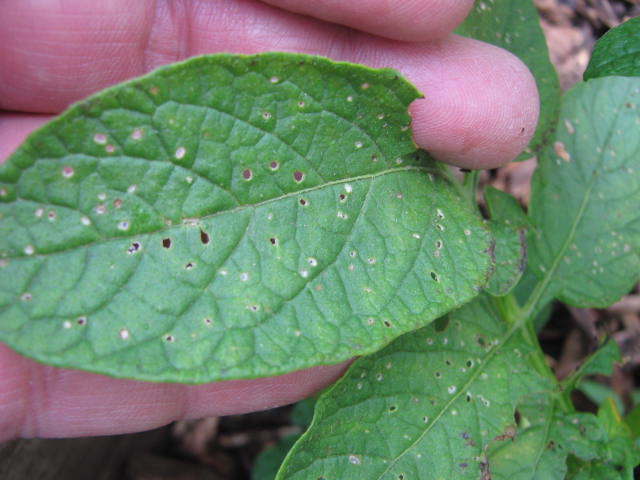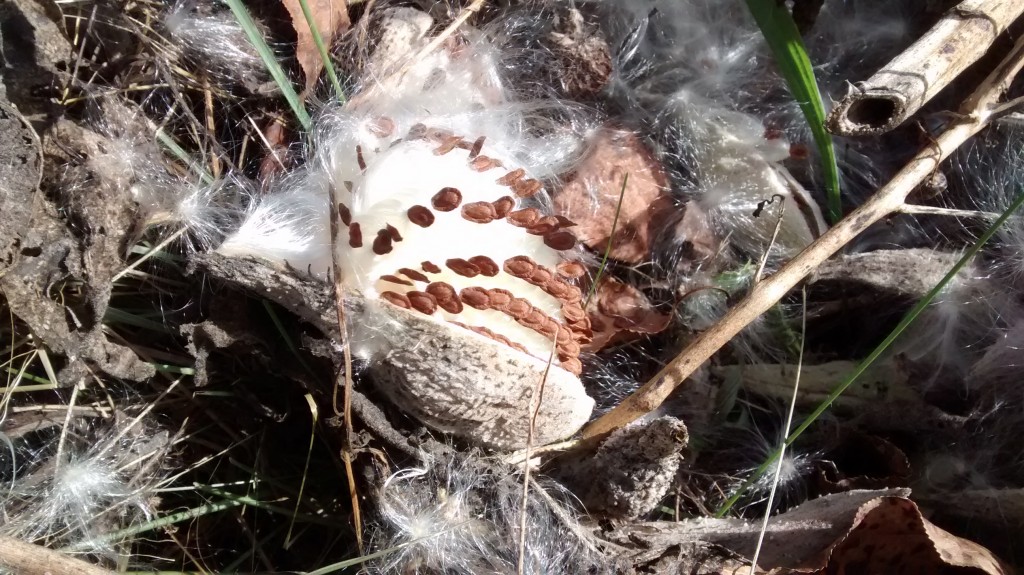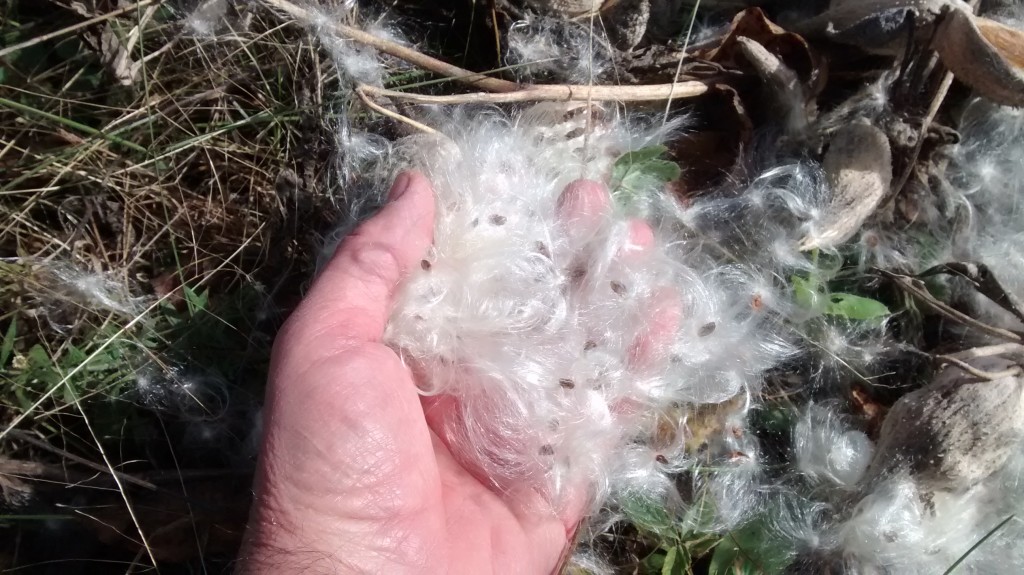While inspecting my garden today I ran across some very cool looking structures on the underside of a leaf. I could tell immediately that they were lacewing eggs. The thin stalks each holding up a tiny white egg on its end was a dead giveaway.
Lacewings are a good ally to have in your war against insect pests because they are a major predator of aphids and other soft-bodied insects like mealy bug, mites and even small, newly hatched caterpillars.
It is the larva stage of the lacewing that terrorizes the other small insects, especially aphids.

If left alone, aphids can rapidly overwhelm a plant by sucking the juice out of a plant’s leaves and stems.
Lacewings eat so many aphids that entomologists have nick-named them “aphid lions”. A single lacewing larva can eat over 200 aphids a week. The adult on the other hand, eats only nectar and pollen.
Depending on the weather conditions, the lacewings will stay in the larval stage for about two to three weeks devouring small insects all the while. When the time is right, they then spin a cocoon and emerge five days later as an adult. The adults mate and the females lay their eggs on the underside of a leaf. About four or five days later the eggs hatch and the cycle starts over again.
Watch for lacewing eggs on your plants and avoid spraying insecticide when you find them. Let them do their work and they will reward you by building up their population and eating even more insect pests.
Bob



